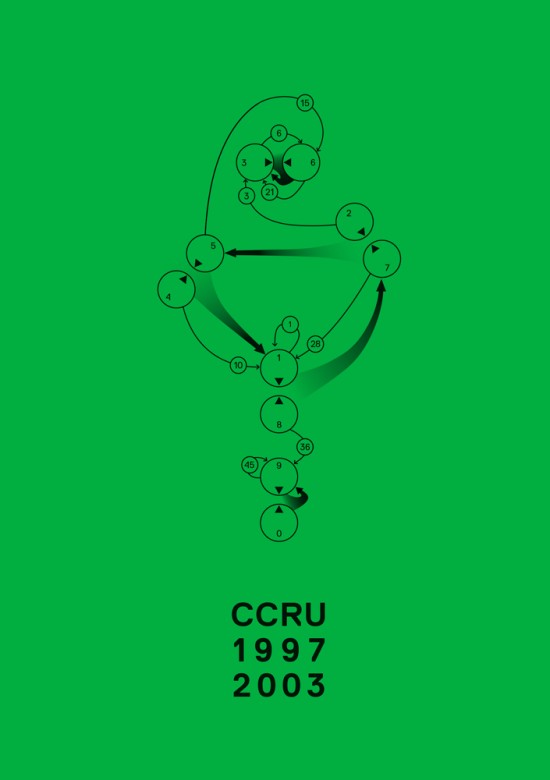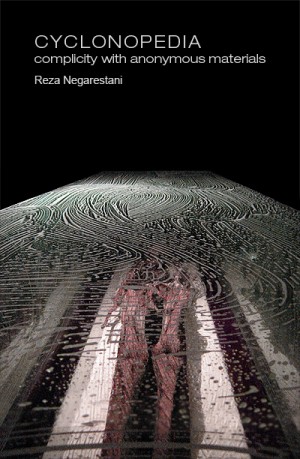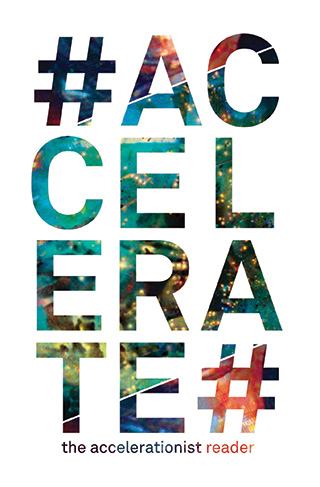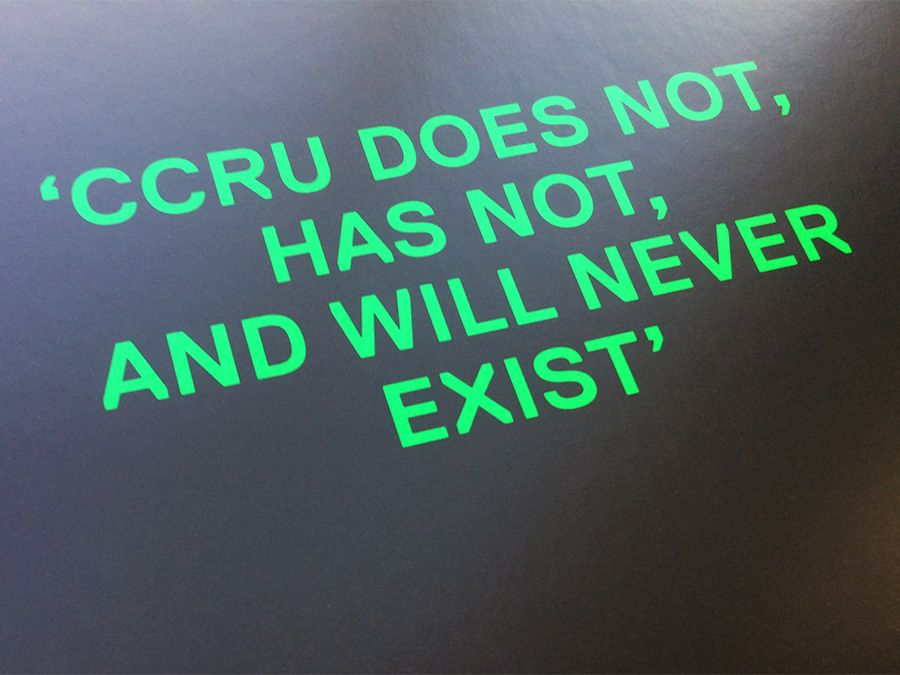The following is from the latest issue of the Full Stop Quarterly. You can purchase the issue here or subscribe at our Patreon page.

Academic niches are rarely of interest to those whose career success does not depend on repeated declarations that the niche in question is of extreme importance. But every once in a while, something that originates in the rarefied, hyper-specialized environment of academia is so compelling and so seductive that it seeps into other spaces—infesting networks and scenes through an unexpected virality. Yet despite their origin in academia, the very nature of such ideas—and of the practices related to them—dictates that the work required to develop them cannot take place within the academy, bound up, as it is, with the projects of the state and the short-term goals of the education and research marketplaces. In the para-academic realm—a space with some freedom from the influence of the (admittedly evanescent) material rewards promised for playing institutions’ games—things can get really weird. This is the proper way to understand the intellectual history—and ongoing practices—of a group known as the Cybernetic Cultures Research Unit (CCRU).
But before we consider the work of the CCRU, first we must understand a term they invented: hyperstitional theory-fiction. The term combines two neologisms developed by CCRU; when joined, they capture both the group’s main interest and its methodology. Hyperstition, a compound of hyper- and superstition, describes ideas that bring themselves into actuality in the future through the forces unleashed via their expression in the past or present. An example of hyperstition is the way that the term “cyberspace”—which originated in William Gibson’s 1984 novel Neuromancer—became, by the mid-1990s, the primary conceptual dispositif through which we understood the emerging technologies of the internet. What had been a fairly cloistered technology, used primarily for the communication of numerical data and text between specialists, suddenly took on a spatial dimension that evoked a sense of the world to come. Just as these technologies were becoming more integrated into the reproduction of social life—and as capital investment began to accelerate—this abstruse tool became a frontier. (The effect of this crass application of a term from science fiction to a still-poorly-understood communication technology persists today; what, other than a contemporary version of gold fever, explains the astronomical overvaluing of a real estate rental company like WeWork, which differentiated itself simply by branding itself as a tech company?) The intense romance and excitement conjured up by Gibson’s concept have (unintentionally) shaped the future that became our present as an idea virus.
Hyperstition refers to the way ideas circulate and manifest themselves under the conditions of techno-capitalism; theory-fiction refers to the condition of knowledge within techno-capitalism. When deployed self-consciously, theory-fiction can even provide an analysis of what is going on—which can itself serve to shape the process of hyperstition. If, as hyperstition would have it, culture, politics, economics, identity, and technology are all part of some kind of cybernetic system—i.e., an interconnected system whose functioning is regulated by, ruptured by, and respondent to complex mechanisms of feedback—then how could one theorize about any of these entangled phenomena without also producing operative fictions that feed back into the system? Theory, then, becomes a response to feedback, and its articulation becomes synonymous with the invention of new fictions, which in turn become part of the network’s process of feedback.
For CCRU, this proposition calls for a new paradigm of knowledge. All attempts to describe the world theoretically, in order to function as some kind of cultural force (e.g., to become a source for policy documents or to establish scientific facts), necessarily involve reduction and intensification. As a result, they bear an uncanny resemblance to fiction. Theoretical descriptions, the CCRU proposed, are not confined to the real (and perhaps never have been), and such descriptions inevitably produce virtual or fictive new pieces of reality. Likewise, pieces of fiction—derived as they are from this cybernetic network of feedback loops—inevitably offer theoretically-legible explanations emerging from their situation. For the CCRU, this entanglement of theory and fiction wasn’t something to lament, but rather an opportunity full of creative and destructive potential. Thus, they sought to produce theory-fictions—and indeed, to become one themselves.
*

The CCRU was founded in the 1990s out of the philosophy department of the University of Warwick. The group had no offical affiliation with the university, the position of which was, according to a Warwick professor quoted in a 2011 article in Dazed, that the “CCRU does not, has not and will never exist.” The group was comprised of an assortment of academic “renegades,” as Simon Reynolds described them in a 1999 article. In this article, he quotes one of the peculiar emails he received from the group with their description of their origins: “Ccru retrochronically triggers itself from October 1995, where it uses Sadie Plant as a screen and Warwick University as a temporary habitat. . . . Ccru feeds on graduate students + malfunctioning academic (Nick Land) + independent researchers + . . .”
Plant and Land—then junior academics—were the central figures of the group. Plant was a key figure in the development of cyberfeminism. As Bognor M. Korinor puts it in an article for _AH Journal, the argument of Plant’s seminal work, Zeros and Ones, is that
patriarchy unwittingly fell into the trap of new technologies, which will have eventually overturned the delusion that the world was doing anything but accelerating into an ever more-rounded feminisation. Patriarchy uses women as its “media, means of communication, reproduction and exchange” but as the media multiply, women multiply, “becoming increasingly interlinked”—both networked technologies and femininity, which are for Plant equivalent, need “no centralized organization and evade structures of command and control.”
Plant’s work rejected the naturalism that had dogged certain strands of feminist theory throughout the twentieth century. Taking up Simone de Beauvoir’s idea that “[o]ne is not born, but rather, becomes a Woman” and technologizing it through Gilles Deleuze and Félix Guattari’s notion of “becoming-woman” and Donna Haraway’s affirmation of the cyborg, Plant developed a feminist theory committed to the liberatory potential of technology, critically understood. The influence of this work has stretched far beyond the CCRU and proliferated in new theory-fictions across the world.
Land was a philosopher who, as his former student (and fellow member of CCRU) Robin Mackay put it in an article for Divus,
was perhaps not the greatest teacher from the point of view of obtaining a sober and solid grounding in one’s subject—but more importantly, his lectures had about them a genuine air of excitement [. . .] Not only was the course he taught pointedly entitled ‘Current French Philosophy’—a currency otherwise alien to our curriculum—more importantly, Land’s teaching was also a sharing of his own research-in-progress. This was unheard-of: philosophy actually being done, rather than being interpreted at second-hand?! He would sweep his audience into a speculative vortex of philosophy, economics, literature, biology, technology, and disciplines as-yet unnamed.
Land’s project, as Mackay describes it, was to re-tool the conceptual framework of absolute contingency he found in Deleuze and Guattari’s Capitalism and Schizophrenia to disassemble the “human security system” that he believed held back the potential of intelligence as such. This project, in combination with the deterritorializing cyber culture of the mid-to-late-1990s, gave CCRU it’s accelerationist direction—but in recent years, it has also taken Land himself into squalid places as a neo-reactionary associated with the “Dark Enlightenment.”
Around these figures, graduate students, writers, artists and musicians gathered to become the CCRU. Members included the philosophers and theorists Luciana Parisi, Mark Fisher, and Kodwo Eshun; the novelist Hari Kunzru; the artists Jake and Dinos Chapman; and the artist group 0rphan Drift. In the strange ideological desert of the nineties, this collective entity sought to use theory-fiction as a part of a hyperstitional project to accelerate the dissolution already taking place under globalized techno-capital. Their goal was not personal enrichment based in neoliberalism; rather, it was to liberate the individual from the confines of identity, geography, history—and from individuality itself, as then conceived. The CCRU’s aim was not to direct the flows of power, resources, and capital toward themselves, but to bring about a future in which humans would be fully enmeshed with these flows.

As members of the CCRU write in their delirious quasi-manifesto, Swarmachines:
There is no doubt anywhere that matters: simply facts. Debate is idiot distraction, humanity is fucked, real machines never closed-up inside an architecture. Schizo-capital fission consists of vectors dividing between two noncommunicating phyla of nonpersonal multiplicity. First pyramid structures control structures: white-clown pixel face, concentrational social segments, EU-2 Integrated history horizon. Second, Jungle-war machines: darkening touch densities, cultural distribution thresholds, intensive now-variation flattened out into ungeometrized periphery.
No community. No dialectics. No plan for an alternative state.
This paragraph nearly perfectly encapsulates their project; it lacks only the deep lore of sci-fi and cosmic horror that permeated the blogs through which CCRU developed their ideas. Everything else is there: the celebration of destructive intensity; the lack of sentimentality about the prospect of the end of “human” life as we know it; the Blade Runner pyramid structures; and the drum and bass subgenre, Jungle, as Deleuze and Guattari’s war machine coursing through the long night of the end of history. One the one hand, this was an intellectual counterculture in action; on the other hand, their point was precisely that they weren’t countercultural at all—they were only amplifying messages from the bleeding edge. In their view, what then passed for radical philosophical critique seemed content to incessantly point out the obvious inconsistencies and contradictions of the “third way.” The CCRU, by contrast, was interested in investigating those forces that had brought about the apparent impasse of the end of history from the inside—and, if possible, in directing its course to somewhere more exciting.

One such exciting course this took was the development of sonic fiction. In 1999, the critic, artist, and CCRU associate Kodwo Eshun published More Brilliant than the Sun: Adventures in Sonic Fiction. Part theoretical treatise, part fictional narration, part journalistic hype-machine, the book was an experiment in amplifying the latent afrofuturist potential in what is, it argues, problematically termed “black music”:
To use the phrase Black Music is to presume a consensus that has never existed, to assume a readily audible pre-synthetic essence which machines have externalized, manufactured and globalized. No longer sheltering within an essence that never was, today’s Futurist understands the mythillogic of the soundmachine.
For Eshun, certain musical practices—often attributed to musicians with certain racially coded bodies—had a destabilizing potential in their capacity to re-engineer historical narratives, and along with them, the concept and possibilities of humanity itself. But the argument was not that there was something essentially different about music produced by the African diaspora. Rather, the difference and potential of this music emerged from the ongoing iterations of the cybernetic feedback process of a world built on colonial exploitation and capitalist extraction. Thus, black musicians occupy an interesting position in a world built on such a foundation with regard to categories like subjectivity, humanity, and being—a position, Eshun suggests, that may in fact contain a particular liberatory, albeit problematic, potential, which he understands as a cyborg potential. In a way that recalls the dynamic explored in Plant’s work on feminism, Eshun refuses the naturalism of previous attempts at articulating emancipatory projects via the soulfulness of “black culture.” Instead, he explores what happens when those whose instrumentalization (non-)being historically positioned them as a tool for another create music—or sonic fictions—in a world that has become an immense collection of technologies. This contingency of history has produced what Eshun calls the “post-soul” that can be heard in the music of Sun Ra, George Clinton, Alice Coltrane, Tricky and Drexciya. In More Brilliant than the Sun, Eshun hoped to amplify this feedback loop and to accelerate this Afrofuturist tendency.
*
Some time around 2003, the CCRU ceased operation. Plant and Land had both left academia. The graduate students involved with the CCRU had for the most part graduated, and were navigating the academic and culture industry job markets. The deterritorializing flows of capitalist life forced those involved in the group in different directions, resulting in the dissolution of an entity that had been formed to describe and accelerate that very process. But hyperstition is all about setting things in motion that take place over time—an intervention in the present that, as it becomes the past, transforms the future. In the decades that followed, the CCRU’s influence made itself known.

In 2008, the Iranian philosopher Reza Negarestani published his book Cyclonopedia: Complicity with Anonymous Materials—at once a work of fringe Islamic theology, speculative philosophy, modern history, and horror fiction—that explores the geotrauma of fossil fuels. Through a theory-fictional method, Negarestani posited that the Middle East was itself a kind of agential force that, through collaboration with the United States’ military-industrial complex, was conspiring to bring about the end of human life on the planet via the irresistibility of oil. While the evidence for these claims would not sway most political scientists, the notion this book articulates—that, in a way that seems almost fated, we are caught in process of entropic acceleration caused by the incessant performance of actions at odds with what our best thinking says we should be doing, suggesting that we might question our anthropocentric notion of agency—is an incredibly useful prism through which to view contemporary petropolitics and the collapse of environmental systems. Cyclonopedia was a remarkable development in the theory-fiction genre: it both expanded what could be done with the form and also brought the concept to a new audience (Artforum featured the book on its list of the best books of the year).
In 2013, political theorists Nick Srnicek and Alex Williams picked up the accelerationist themes found in the work of the CCRU, and tried to re-tool them for an explicitly leftist political project in #ACCELERATE MANIFESTO for an Accelerationist Politics. Their intention was to show that technological development need not be synonymous with the machination of capital and that, through a commitment to technology, a new political potential was possible.
In the manifesto, Srnicek and Williams write:
The left must develop socio-technical hegemony: both in the sphere of ideas, and in the sphere of material platforms. Platforms are the infrastructure of global society. They establish the basic parameters of what is possible, both behaviourally and ideologically. In this sense, they embody the material transcendental of society: they are what make possible particular sets of actions, relationships, and powers. While much of the current global platform is biased towards capitalist social relations, this is not an inevitable necessity. These material platforms of production, finance, logistics, and consumption can and will be reprogrammed and reformatted towards post-capitalist ends.

In 2014, Urbanomic—the publishing house run by former CCRU member Robin Mackay—released Accelerationist Reader, a collection of texts including works by Karl Marx, Shulamith Firestone, Deleuze and Guattari, Patricia Reed, and Mark Fisher. The book was an attempt to produce a canon—i.e., it was a theory-fictional retelling of intellectual history to emphasize the thread that had developed into accelerationism. It was an opportunity to see some earlier hyperstitions coming to pass.
That same year, at a summer school in Berlin that would be immortalized in the odd 2015 documentary Hyperstition, a group of thinkers came together to form the xenofeminist collective Laboria Cuboniks. In their exciting and controversial 2015 manifesto, Xenofeminism: A Politics for Alienation, Cuboniks argued—echoing Plant—that feminism should reject the centering of nature as its principle of justification and instead embrace technologies of abstraction and rationality. Put another way, it was an argument for the utilization of what they saw as a space of potential opened up by alienation from the immediacy of experience. Taking this a step further, they closed the manifesto with this maxum: “In the name of feminism, ‘Nature’ shall no longer be a refuge of injustice, or a basis for any political justification whatsoever! If nature is unjust, change nature!”
Philosopher Luciana Parisi—another former member of the CCRU—argues that the manifesto should be understood not as a political program, but as an attempt to exercise force in the world by cybernetic means. In the essay “Automate Sex: Xenofeminism, Hyperstition and Alienation,” she writes:
The manifesto shouldn’t be read as a declaration of intent, but must be addressed as an exercise in hyperstition: a thought experiment or an enabler of the future. Here the inexistent can be made explicit by and through the practical and theoretical enforcing or naming of truths in the face of indeterminacy, of engineering politics in the face of the relativism of positions.
Parisi’s analysis points to exactly what is so powerful about theory-fiction. Unlike the approach of critique—which has some unspoken ideal simmering under the surface and hemming in its theoretical invention—and unlike the affirmative approaches of thinkers like Deleuze and Foucault—which can become little more than descriptions of the world of post-colonial, patriarchal techno-capital, so vivid that scholars of those approaches are sought after by business schools the world over—hyperstitional theory-fiction allows for objectified interventions that can clearly articulate an ideal in the full recognition of its contingency. It positions its own project as already embedded in and shaped by the culture in which it is situated. And rather than succumbing to defeatism, it relishes the problematics that this inflicts upon the agencies of its practitioners. It is a practice of living and thinking through a paradox that has no uses for such surface level reading of its position. After all, what is more fictional than doxa?
But here we also find something frightening about this approach: its terrifying ambivalence. An approach that understands human agency as an illusory interpretation of the exertion of force—a bi-product of mediated feedback amongst the flows of material processes—is definitionally unmoored from conventionally understood ethical or political commitments. We see this in what lead Srnicek and Williams to ultimately abandon the conceptual frame of left accelerationism. Critics of their projects, including Land, claimed that they had misunderstood where the engine of technological acceleration was located. From a traditional accelerationist point of view, it is not, as they claimed, possible to separate the progress, spread, and development of current technological tendencies from capital, because they are constituted by capital. The theory-fiction on which accelerationism was based cannot undergo a political convention because it is a story about capital as an ambivalent force. This is why Land’s current work has led him to produce theory-fictional narrations of world history to hyperstitionally engage in the making of a world of neoreactionary CEO kings and hyper-racism. Which is to say: he has followed the tendencies of capital in all its violence. Thus, to advance a progressive political project, Srnicek and William have reframed their ideas in more conventionally-grounded terms, exemplified in their 2016 book Inventing the Future: Postcapitalism and World Without Work.

The most recent significant contribution to the practice of hyperstitonal theory-fiction was the edited volume of sonic fiction, Unsound: Undead, released last year by the collective AUDINT. The group’s founders include Steve Goodman—a former member of the CCRU, the founder of the record label Hyperdub, and one of most skillful articulators and propagators of the concept of unsound. In his 2009 book Sonic Warfare, which some would regard as a sonic fiction, Goodman delves further into the cybernetic structures that gave hyperstition form and argues, after Baruch Spinoza, that—in an ontological sense—matter could be said to exist in and affect the world to the extent that it interacts with vibrational force. Unsound is his term for those vibrations that affect us, the world, and the cosmos that are outside the narrow band of human hearing. Unsound: Undead further develops this concept by means of vignettes by both prominent and up-and-coming thinkers in music, sound, media, critical theory, and philosophy. In a fragmented and indirect way, these texts chart the relationship between recorded, stored, and mediated sound, and death. Or, put another way, they consider the eerie world in which such recordings have made it so that nothing is ever really dead, and the presence of dead things amongst the living continues to enact and force up the present-becoming-future.

Hyperstitional theory-fiction was the invention of an entity that exists now as a similarly mediated undead digital specter. The CCRU was a fascinating parasite on the institution in which it was founded. By drawing on the resources of this academic enclosure—the magnetism it held for searching minds, the libraries, the disillusionment of becoming-institutionalized—it was able to give form to intuitions of things to come otherwise overlooked by those building careers in the relative safety of the academy, and which are now all but impossible to ignore. Beyond this, it produced a generation of highly original thinkers whose commitment to their work was not limited to the fickle favors of the research and education sector and who, for good and ill, have inspired thousands more. It’s worth noting, once again, that the very forces that the CCRU hoped to articulate through hyperstitional theory-fiction are ultimately what led to the unit’s demise. For many schools of thought, such a turn of events would be ruinous, as it would seem to invalidate their tenets and assertions. But for the ideas of the CCRU, the circumstance of their demise only served as further proof of their claim that we are—and perhaps always have been—in an age in which very little can be said to be under human control.
Macon Holt completed his PhD at the Centre for Cultural Studies, Goldsmiths, University of London, in 2017. He is a contributing editor at the music magazine Passive/Aggressive, and his writing has appeared in Atlas Magasin, Blacklisted Copenhagen, and The Ark Review. His first book, Pop Music and Hip Ennui: A Sonic Fiction of Capitalist Realism, was published by Bloomsbury Academic in 2019.
This post may contain affiliate links.








